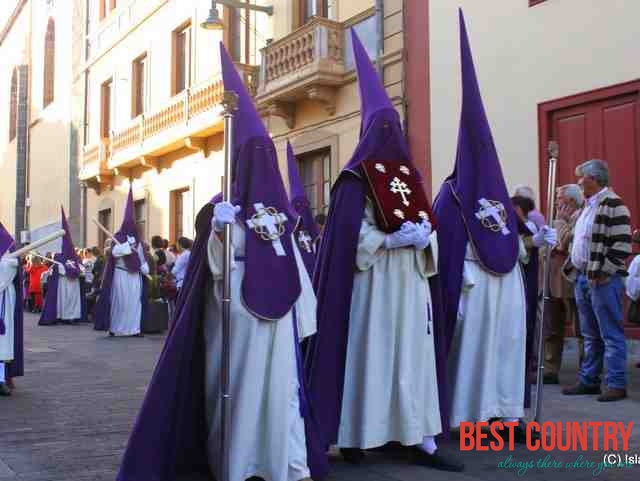Easter traditions in Spain

Easter is regarded as the most important festival in Spain. It is a grand annual occasion and boasts of a rich heritage and culture. Known as ‘Semana Santa’ in Spanish, it is an occasion of celebration and merriment. The celebrations start with ‘Domingo de Ramos’, or Palm Sunday, and finishes with ‘Lunes de Pascua’, or Easter Monday. Easter is observed as a religious occasion by the people of Spain, who commemorate the resurrection of Jesus with much fanfare and gaiety. Parades are organized in the country, with people carrying huge, leafy palm or olive branches that have been blessed in the church.
‘Corpus Christi’ is the prime ritual practiced in Spain on Easter. In this ritual, the streets pose as the stage for display of religious passion and devotion. People, dressed as members of ancient brotherhoods, are out on the streets, passing through various towns. ‘La Patum’ is a traditional Easter ritual, with a procession of giants, devils and monsters thronging the streets to celebrate ‘Corpus Christi’. Another ritual observed in Spain is the burning of raw and straw figurine of famous people, placed at different locations in the village/city. These dolls, called Judas dolls, are either torn apart and thrown away or set on fire.
Along with the religious festivity, in Spain, Easter also proves a great time for family get-togethers. On this day, a sumptuous feast is prepared in every household with special dishes like ‘La Mona’ or Easter egg, pork sausage and calзots, hazelnut cream with pheasant ravioli truffles and Italian Easter bread. The festivity of Eastertide extends to every street, with loud sounds, bright lights, nicely dressed people and celebration and enjoyment seen everywhere. Easter also proves as a holiday time for Spanish people, as most of them rush to the historic sites in the country to bask in the glory of the festival.